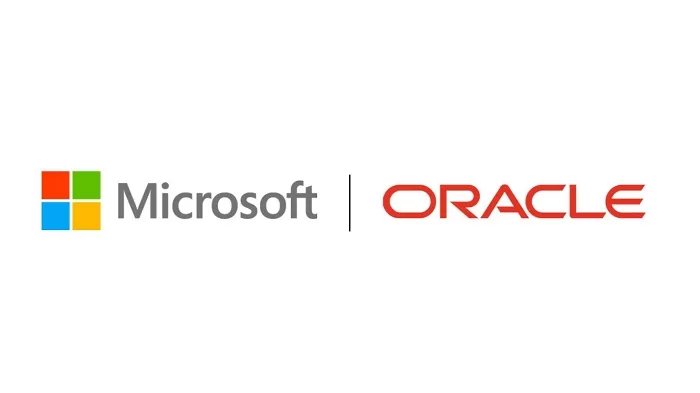Technology
Oracle and Microsoft Announce Availability of Oracle Database Service for Microsoft Azure

Oracle Corp and Microsoft Corp announced the general availability of Oracle Database Service for Microsoft Azure. With this new offering, Microsoft Azure customers can easily provision, access, and monitor enterprise-grade Oracle Database services in Oracle Cloud Infrastructure (OCI) with a familiar experience. Users can migrate or build new applications on Azure and then connect to the high-performance, high-availability, managed Oracle Database services such as Autonomous Database running on OCI.
Offering Customers Choice with Azure and OCI Multicloud Capabilities
Over the last two decades, thousands of customers have relied on Microsoft and Oracle software working well together to run their business-critical applications. As customers migrate applications and data to the cloud, they continue to look for joint solutions from their trusted software partners. Since 2019, when Oracle and Microsoft partnered to deliver the Oracle Interconnect for Microsoft Azure, hundreds of organizations have used the secure and private interconnections in 11 global regions.
Microsoft and Oracle are extending this collaboration to further simplify the multicloud experience with the announcement of Oracle Database Service for Microsoft Azure. Many joint customers, including some of the world’s largest corporations such as AT&T, Marriott International, Veritas and SGS, want to choose the best services across cloud providers to optimize performance, scalability, and ability to accelerate their business modernization efforts. The Oracle Database Service for Azure builds upon the core capabilities of the Oracle Interconnect for Azure and enables any customer to more easily integrate workloads on Microsoft Azure with Oracle Database services on OCI. There are no charges for using the Oracle Database Service for Microsoft Azure, the Oracle Interconnect for Microsoft Azure or data egress or ingress when moving data between OCI and Azure. Customers will pay only for the other Azure or Oracle services they consume, such as Azure Synapse or Oracle Autonomous Database.
“Microsoft and Oracle have a long history of working together to support the needs of our joint customers, and this partnership is an example of how we offer customer choice and flexibility as they digitally transform with cloud technology,” said Corey Sanders, corporate vice president, Microsoft Cloud for Industry and Global Expansion. “Oracle’s decision to select Microsoft as its preferred partner deepens the relationship between our two companies and provides customers with the assurance of working with two industry leaders.”
“There’s a well-known myth that you can’t run real applications across two clouds. We can now dispel that myth as we give Oracle and Microsoft customers the ability to easily test and demonstrate the value of combining Oracle databases with Azure applications. There is no need for deep skills on both of our platforms or complex configurations—anyone can use the Azure Portal to get the power of our two clouds together,” said Clay Magouyrk, executive vice president, Oracle Cloud Infrastructure.
“Multicloud takes on a whole new meaning with the launch of the Oracle Database Service for Microsoft Azure. This service, designed to provide intuitive, simple access to the Exadata Database Service and Autonomous Database to Azure users in a transparent manner, responds to the critical need of Azure and Oracle customers to apply the benefits of the latest in Oracle Database technology to their Azure workloads. This combined and interactive connection of services across public clouds sets the stage for what a multicloud experience should be, and is a bold statement about where the future of cloud is heading. It should deliver huge benefits for customers, developers, and the cloud services landscape overall,” said Carl Olofson, research vice president, Data Management Software, IDC.
Familiar Experience for Azure Users Combined with an Oracle Managed Service
With the new Oracle Database Service for Microsoft Azure, in just a few clicks, users can connect their Azure subscriptions to their OCI tenancy. The service automatically configures everything required to link the two cloud environments and federates Azure Active Directory identities, making it easy for Azure customers to use the service. It also provides a familiar dashboard of your Oracle Database Services on OCI using Azure terminology and monitoring with Azure Application Insights.
“Many of our mission-critical workloads are running Oracle databases on-premises at massive scale. As we move these workloads to the cloud, Oracle Database Service for Azure enables us to modernize these Oracle databases to services such as Autonomous Database in OCI while leveraging Microsoft Azure for the application tier,” said Jeremy Legg, chief technology officer, AT&T. Watch the video.
“Multicloud architectures enable us to choose the best cloud provider for each workload based on capabilities, performance, and price. The OCI and Azure partnership integrates the capabilities of two major cloud providers, including the Oracle Database services in OCI and Azure’s application development capabilities,” said Naveen Manga, chief technology officer, Marriott International. Watch the video.
“Oracle Database Service for Microsoft Azure has simplified the use of a multicloud environment for data analytics,” said Jane Zhu, senior vice president and chief information officer, Corporate Operations, Veritas. “We were able to easily ingest large volumes of data hosted by Oracle Exadata Database Service on OCI to Azure Data Factory where we are using Azure Synapse for analysis.”
“Oracle Database Service for Microsoft Azure simplifies our multicloud approach. We’re going to be able to leverage the best of Oracle databases in Azure, and we are going to be able to keep our infrastructure in Azure. This is a great opportunity to have the best of the two worlds that eases our migration to the cloud and improves the skills of our people in IT,” said David Plaza, chief information officer, SGS. Watch the video.
Additional Resources
- Get started with Oracle Database Service for Microsoft Azure
- Read more about the announcement
- Read industry analyst commentary
- Learn more about Oracle Database Services
- Learn more about Oracle Cloud Infrastructure
- Learn more about Microsoft Azure and Oracle solutions
Source: Microsoft

















































